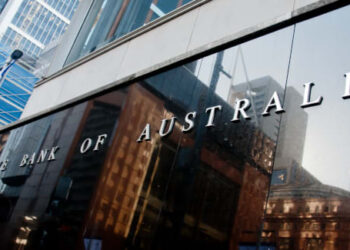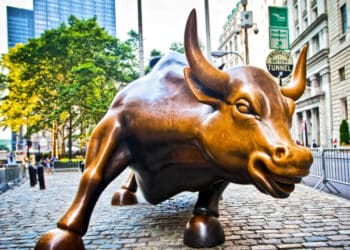The S&P/ASX 200 surged above the 7,000 index point milestone on Thursday after the US and China signed their long-anticipated “phase one” trade agreement.
The market continued to rally on Friday, extending its high. According to Bloomberg data, Australia’s stockmarket has led the pack, with the index jumping 5.4 per cent in its YTD performance.
As a result of the Reserve Bank cutting cash rates to historic lows, Australians have copped lower interest rates on their savings. Evidently, they have sought higher returns elsewhere.
David, Bassanese, chief economist at BetaShares noted with household debt levels being high, Australia is in a “liquidity trap” where cheaper borrowing rates aren’t able to easily encourage more spending and credit growth.
“Instead, the main effect of lower interest rates is indirect, through asset prices – with both the property and share markets now on a tear, which could help boost consumer spending eventually,” Mr Bassanese said.
“But relying on an asset-led economic recovery comes with great risk – namely overly inflated asset prices that may need to fall somewhat harder than otherwise in coming years.”
Fidelity International cross-asset specialist Anthony Doyle noted there is risk from populist-centred geopolitics placing downward pressure on economies, through “anti-growth” policies such as protectionism, anti-immigration and government intervention.
But he still remains optimistic about Australian equities.
“We’re in the unusual position of having tailwinds from both monetary and fiscal policy,” Mr Doyle said.
“Having pretty much used up all monetary policy ammunition, governments are now being asked to step up with fiscal policy to help economies break free of this very low growth world.
“This will likely come via significant infrastructure development which should be good news as low interest rates combined with fiscal stimulus is normally a positive environment for equity returns.”
Even lower rates could further boost equities
The increased likelihood of further decreased interest rates due to the bushfires devastating the economy may have spur people further to keep buying equities.
Deakin associate professor of finance Victor Fang noted fear of missing out on investment returns is trumping the fear of global volatility.
“The Australian sharemarket has started the year strongly and is up around 5 per cent in January, despite a backdrop of domestic risk and international tension,” Mr Fang said.
“Perversely, the Australian market has interpreted the cost of the devastating bushfires, estimated in the tens of billions, as increasing the likelihood that the Reserve Bank will cut the interest rate to 0.5 per cent early this year.
“The mere prospect of already low-interest rates dropping even further is enticing people to borrow money and invest in equities. As the Australian economy continues to grow at a comparatively solid rate, equity investors and home owners are leveraging the cheap cost of borrowing to pursue capital growth.”
Mr Fang’s message to investors is don’t sell just yet.
Aussies may start looking offshore
But some experts have recommended caution.
Mr Bassanese has suggested rising global equity prices appear justified given an encouraging economic backdrop, but Australia’s market is “fundamentally more challenged”.
Global equities look favourable given low inflation, accommodative central banks and a likely lift in global growth and corporate earnings if the two-year uncertainty around global trade begins to dissipate.
Given this is a US election year, Mr Bassanese commented, President Donald Trump is unlikely to risk a severe market downturn or economic slump by antagonising China again soon.
“Australia’s market has been pulled along by the global optimism, even though local fundamentals are far more challenging,” he said.
“Australia’s economic and corporate earnings outlook appears relatively weak compared to that of the United States. And having the S&P/ASX 200 at 7,000 points implies the market is trading at a relatively high 18.3 times forward earnings (compared to a longer-run average of only 14.5).
“This suggests investors might seek some global diversification to mitigate the risk of eventual local equity market underperformance.”







